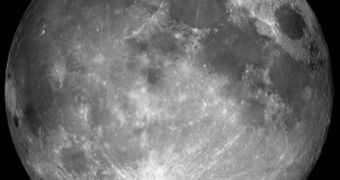China, somewhat of a new player on the international space scene, apparently wants to make up for the time it lost in front of the United States, Europe, and Russia. Having successfully launched its first unmanned lunar probe in 2007, the country is currently aiming at a 2010 deadline for the launch of its second scientific device, which it hopes to have operational as early as possible. The first orbiter, named Chang’e-1, managed to transmit back the first pictures of the Moon's surface in January 2008.
The Chinese space agency also plans to send its first taikonaut to the surface of Earth's natural satellite by 2020 at the latest. The country has already demonstrated spacewalk capabilities, so now it’s just a matter of developing the necessary technology to construct the carrier spacecraft that would deliver its crew to the surface of the Moon. By 2050, the same basic plan shows, the country would like to have its own, permanent base on the satellite, from which to conduct experiments. The goal is highly ambitious, even with China's massive funds and interest in such explorations.
The goal also leaves analysts skeptical because the country only exhibited space capabilities in 2003, on October 15, when taikonaut Yang Liwei went to space aboard the Shenzhou-V spacecraft. Since then additional flights have been conducted, but the technology used still poses a high degree of uncertainty. The first and only spacewalk was achieved in September 2008, with three taikonauts aboard the Shenzhou-VII spacecraft. But the Chinese government is sure that the risks are worth the possible scientific and strategic returns, Space Fellowship reports.
The Chang’e-2 and Chang’e-3 spacecrafts will aim to ensure this is the case right on the scene. The former is a second orbiter, while the later is a lunar lander, which is scheduled to touch down in the Sinus Iridium (Bay of Rainbows) region. The lander will look for usable resources on the surface of the planet, and it will also conduct a thorough analysis of its target zone's topography. Chang’e-3 is not scheduled to be launched until 2013. Most likely, the take off will occur from the Xichang space center, in the southwestern part of the country. A Long March 3B delivery system is the most likely platform.
The chief designer of the first probe, Ye Peijian, says that Chang's-2, the orbiter scheduled for the 2010 launch, will be more advanced than its predecessor. The orbiter will carry “a charge-coupled device (CCD) camera on board, which has a much higher resolution than the camera on China’s first lunar probe. [The new spacecraft] will orbit 100 kilometers closer to the Moon [than the first probe] and will be equipped with better facilities. We expect to acquire more scientific data about the moon with increased accuracy,” the expert says, quoted by China Daily.

 14 DAY TRIAL //
14 DAY TRIAL //